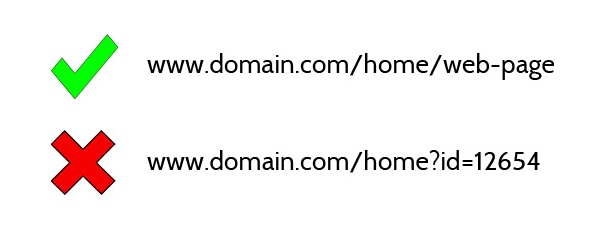What is a PrestaShop Pretty URL, and why does it matter?
A PrestaShop Pretty URL is a simple, user-friendly web address that removes unnecessary elements like product IDs, making it more readable. Clean URLs improve both customer experience and SEO by providing structure that’s easy for search engines to crawl and index. For example, instead of a messy URL like (yourstore.com/index.php?id=23), you can have (yourstore.com/summer-dresses). Additionally, PrestaShop 1.7 canonical URL Module settings ensure that duplicate pages are consolidated under one primary link. By having a well-structured PrestaShop Friendly URL, your store not only looks more professional but also performs better in organic search results.

Who benefits the most from Pretty URLs in PrestaShop?
Pretty URLs are beneficial for all PrestaShop users, regardless of business size. Small businesses can use them to gain credibility, as customers are more likely to click on clean, trustworthy links. Larger stores benefit from structured URLs because they improve site navigation and make product pages easier to find. Additionally, Pretty URLs work wonders for SEO—Google and other search engines reward well-organized URLs with higher rankings. Whether you’re an entrepreneur running a niche boutique or managing a multi-category store, these URLs can make a noticeable impact.
When is the best time to set up redirections?
Redirections become essential when you’re changing your site structure, discontinuing products, or moving to a new domain. Without proper redirections, visitors will run into “Page Not Found” (404) errors, which can damage both user trust and your SEO ranking. By using 301 redirects, traffic from old URLs is automatically redirected to relevant new pages, ensuring a seamless experience. These redirects also pass on the SEO value of the old page to the new one, maintaining your hard-earned rankings. Implementing redirections early—right after making any changes to URLs—helps avoid traffic loss and protects your SEO score.
Where do you configure Pretty URLs and canonical URLs in PrestaShop?
PrestaShop makes it simple to set up Pretty URLs through the Back Office. Go to the “SEO & URLs” section, where you can enable Pretty URLs and remove the ID from product URLs with just a few clicks. You can also configure PrestaShop 1.7 canonical URL settings here to make sure search engines index the right version of each page. These tools are especially useful if you have multiple URLs leading to similar content, like different color variations of the same product. Additionally, you can manage redirections here to ensure no visitor or search engine hits a dead end.
Why are Pretty URLs so essential for PrestaShop users?
Pretty URLs offer more than just aesthetic benefits—they create trust and improve the overall usability of your store. Clean URLs are easier to share across social media or marketing campaigns, increasing the chances of customer engagement. Having a PrestaShop SEO Friendly URL also helps reduce bounce rates since visitors are more likely to stay on sites with well-organized content. From an SEO perspective, these URLs enhance your store’s visibility, giving search engines clear information about your products and categories. Shoppers appreciate the clarity, and search engines appreciate the structure—making it a win-win situation.
How do canonical URLs and Pretty URLs enhance SEO in PrestaShop?
Pretty URLs improve your store’s SEO by making your website easier for search engines to crawl. They help highlight product categories and individual pages, which gives your store a ranking advantage. Meanwhile, PrestaShop 1.7 canonical URL settings ensure that Google indexes only the main version of each page, preventing duplicate content issues. For instance, if a product exists in multiple categories or has slightly different variations, canonical tags tell search engines to focus on a single page. This prevents internal competition between your URLs, boosting your chances of ranking higher for relevant searches.
Redirections also play a role in SEO. Whenever you change a URL, using a 301 redirect ensures that any “link juice” (SEO value) from the old link is transferred to the new one. This keeps your SEO performance intact while improving the user experience by preventing broken links.
Final Thoughts
PrestaShop Pretty URLs are a small but essential part of maintaining a well-structured, SEO-friendly online store. Clean URLs make navigation easy for users and provide search engines with a clear path to index your pages correctly. Canonical URLs and redirections ensure that you’re managing content efficiently without creating duplicate issues or dead ends. Whether you’re running a brand-new store or revamping an older one, setting up Pretty URLs and optimizing them with canonical tags will boost both your SEO performance and user satisfaction.
By combining these tools, you create a smoother, more intuitive experience for visitors while protecting your rankings—making your PrestaShop store a reliable and accessible destination for your customers.
Read more similar blogs by click here.



